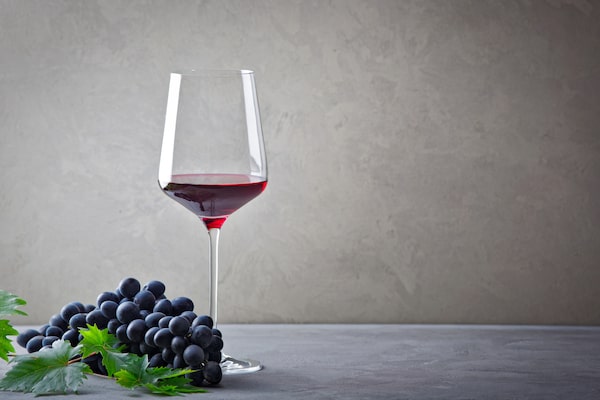
Алик Фатхутдинов/iStockPhoto / Getty Images
We hosted a party in December where guests brought several bottles of shiraz and syrah. What’s the difference between these grape varieties?
Syrah and shiraz are different names for the same red wine grape. But like pinot grigio and pinot gris, another example where two distinctive wine styles are made from a genetically identical grape variety, the differing names declare a difference in origin and, potentially, production methods.
The grape is more widely known as syrah, which is what it’s called in its native France, where some of the world’s greatest red wines are produced in the northern Rhône Valley. Since the name of the grape doesn’t typically appear on wine labels from this part of the world, consumers likely identify more with Hermitage, Crozes-Hermitage or Cornas, the names of villages in the northern Rhône where syrah is the principal red wine grape.
In the warmer climes of the southern Rhône, syrah is typically blended with heat-loving grenache, mourvedre and other regional grape varieties to create a diverse array of regional wines, such as Châteauneuf-du-Pape, Gigondas or Côtes du Rhône. (Once again, any mention of the cultivated grape varieties would be confined to the back label.)
When syrah vines first landed in Australia in the 1830s, they were recorded as shiraz in some ledgers. The variety has also been identified by Australian growers and vintners as syrah, scyra or Hermitage, a term used by wineries including Penfolds and Wynns Coonawarra Estate until the late 1980s, when it was abandoned out of respect for the Hermitage region. Shiraz stuck as common usage, and that name now appears on a vast number of labels from Australian producers, ranging in price from $9 to more than $900 a bottle.
When the Australian wine boom took place in the second half of the 1980s through the late 2000s, shiraz was slapped on red wines made from the syrah grape indiscriminately, even on early releases from the Okanagan Valley and Niagara that didn’t taste much like those thunderous reds from Down Under. At this time, a Chilean wine from a major winery that was exported all over the world as a syrah needed to be relabelled shiraz to gain shelf space at the LCBO due to overwhelming consumer interest.
When Australian wine’s export market collapsed, the marketing sizzle of shiraz was largely extinguished for producers outside of Australia. The majority of bottles coming to Canada from South Africa, Argentina and New Zealand today identify as syrah.
But there is more than just a difference in name, which is why the syrah versus shiraz conundrum endures.
While both wine styles are assertive and flavourful red wines, those labelled syrah tend towards more elegant, earthy and peppery characters. Labels brandishing shiraz on the other hand are usually richer, riper with more jammy fruit flavours and full-bodied character.
These are sweeping generalizations, but they speak to the true character of the style of wine implied by a wine labelled syrah opposed to a shiraz.
Shiraz from Australian regions like Barossa Valley or McLaren Vale are fruitier and more richly textured than spicier ones from cooler areas, such as Heathcote or the Strathbogie Ranges. Syrah made in Swartland, South Africa, is typically bigger and bolder than the fragrant and refined ones from Rosario Valley in Chile.
One common feature of both syrah and shiraz wines is a lack of presence. They seemingly don’t have the same cache as cabernet sauvignon or pinot noir, which is a pity. I believe syrah represents some of the best red wines coming out of the Okanagan Valley, Washington State and South Africa – and many other regions. It’s a great grape in California, too, but struggles to find an audience. Wine marketers in the Golden State have a wry joke: What’s the difference between a cold and a case of California syrah? You can get rid of a cold.
Hearing that multiple bottles of red wine made from this provocative grape turned up at your party shows that syrah and shiraz are having a moment. You can expect to see more syrahs reviewed in the coming months as the quality has never been better. That goes for shiraz, too.
E-mail your wine and spirits questions to The Globe. Look for answers to select questions to appear in the Good Taste newsletter and on The Globe and Mail website.
 Christopher Waters
Christopher Waters